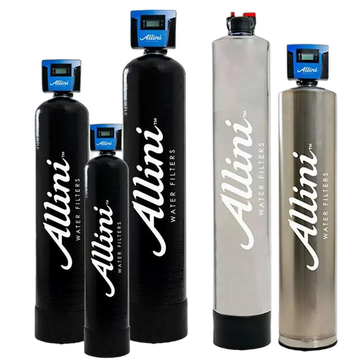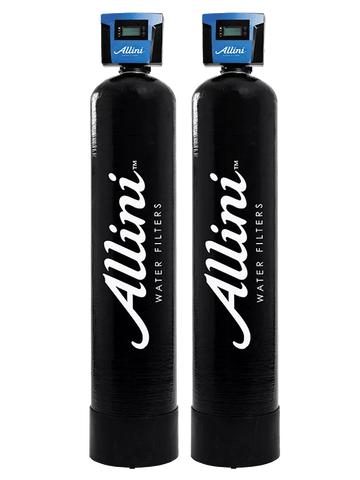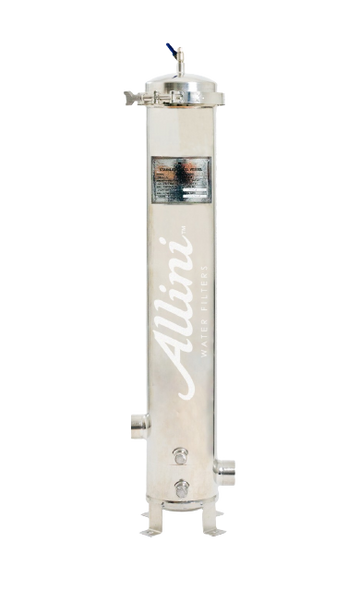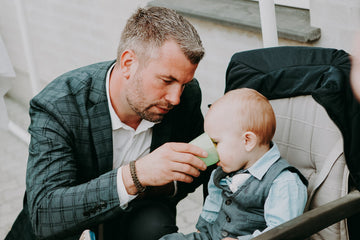10 Tips on How To Remove Bacteria & Chemicals From Your Kids' Water
by Jahmorly Reynolds on Aug 02, 2023

As parents, ensuring the safety and well-being of our children is our top priority. One crucial aspect often overlooked is the quality of the water they consume. Contaminated water can harbor harmful bacteria and chemicals that may have adverse effects on our kids' health. To help, we've created a list of 10 tips to remove bacteria and chemicals from your kids' water, ensuring they stay hydrated and healthy.
1. Invest in a Reliable Water Filtration System
A water filtration system is a vital investment to protect your children from harmful substances present in tap water. Look for a reputable filtration system that removes common contaminants such as chlorine, lead, and bacteria. This will provide your kids with clean, safe, and chemical-free water for drinking and cooking.
2. Boil Water Before Use
Boiling water is a simple yet effective method to kill bacteria and eliminate some chemicals. Ensure the water reaches a rolling boil for at least one minute to ensure its safety for consumption. Teach your kids the importance of using only boiled water for drinking purposes.
3. Use UV Purification
UV purification systems are highly efficient in eliminating bacteria and other harmful microorganisms from water. The ultraviolet rays disrupt the DNA of these pathogens, rendering them harmless. UV purification is safe, chemical-free, and eco-friendly, making it an excellent option for your kids' water.
4. Add Lemon to Water
Lemon not only adds a refreshing flavor to water but also helps in removing certain chemicals. The citric acid in lemon aids in neutralizing toxins, making the water safer for consumption. Encourage your kids to drink lemon-infused water as a healthy and tasty alternative.
5. Use Activated Charcoal Filters
Activated charcoal filters are highly effective in removing impurities and chemicals from water. These filters work by adsorbing contaminants onto their surface, leaving you with cleaner and safer drinking water. Replace the filters regularly to maintain their efficiency.
6. Install Reverse Osmosis System
A reverse osmosis system is an excellent choice for removing bacteria, chemicals, and heavy metals from water. This filtration process uses a semipermeable membrane to separate impurities, leaving you with purified water. Consider installing a reverse osmosis system in your home for added peace of mind.
7. Encourage Stainless Steel or Glass Containers
Avoid using plastic bottles or containers for storing water, especially for your kids. Plastic containers may contain harmful chemicals like BPA that can leach into the water. Opt for stainless steel or glass containers that are safer and more eco-friendly.
8. Regularly Clean Water Dispensers
If you use a water dispenser, ensure it is regularly cleaned and sanitized. Stagnant water can become a breeding ground for bacteria. Regular maintenance will ensure that the water remains safe and free from contaminants.
9. Teach Proper Hand washing
One of the most effective ways to prevent water contamination is by teaching your kids proper hand washing techniques. Encourage them to wash their hands before handling water containers or drinking from them to minimize the risk of bacterial transfer.
10. Use Water Test Kits
Invest in water test kits to monitor the quality of your kids' water regularly. These kits are easy to use and will help you identify any contaminants present in the water. Based on the results, take necessary actions to improve the water quality.
Frequently Asked Questions (FAQs)
Q: Can bacteria in water harm my children's health?A: Yes, certain bacteria in water can cause various illnesses, especially in children with weaker immune systems. It's crucial to ensure the water they consume is free from harmful bacteria.
Q: Are chemical contaminants in water dangerous for kids?
A: Yes, chemicals like chlorine and lead can have adverse effects on children's health. It's essential to remove these contaminants from their water supply.
Q: What are the signs of water contamination?
A: Signs of water contamination include unusual taste, odor, or cloudiness in the water. In some cases, contaminated water may cause gastrointestinal issues.
Q: Can I use a water pitcher filter for kids' water?
A: Water pitcher filters are suitable for improving water taste but may not effectively remove all contaminants. Consider investing in a more robust filtration system for your kids' water.
Q: How often should I change water filters?
A: The frequency of filter changes depends on the specific filter type and the water quality. As a general rule, follow the manufacturer's recommendations for replacement intervals.
Q: Is it necessary to buy bottled water for my kids?
A: Bottled water can be expensive and may not always be safer than tap water. Investing in a reliable water filtration system at home is a more sustainable and cost-effective solution.










